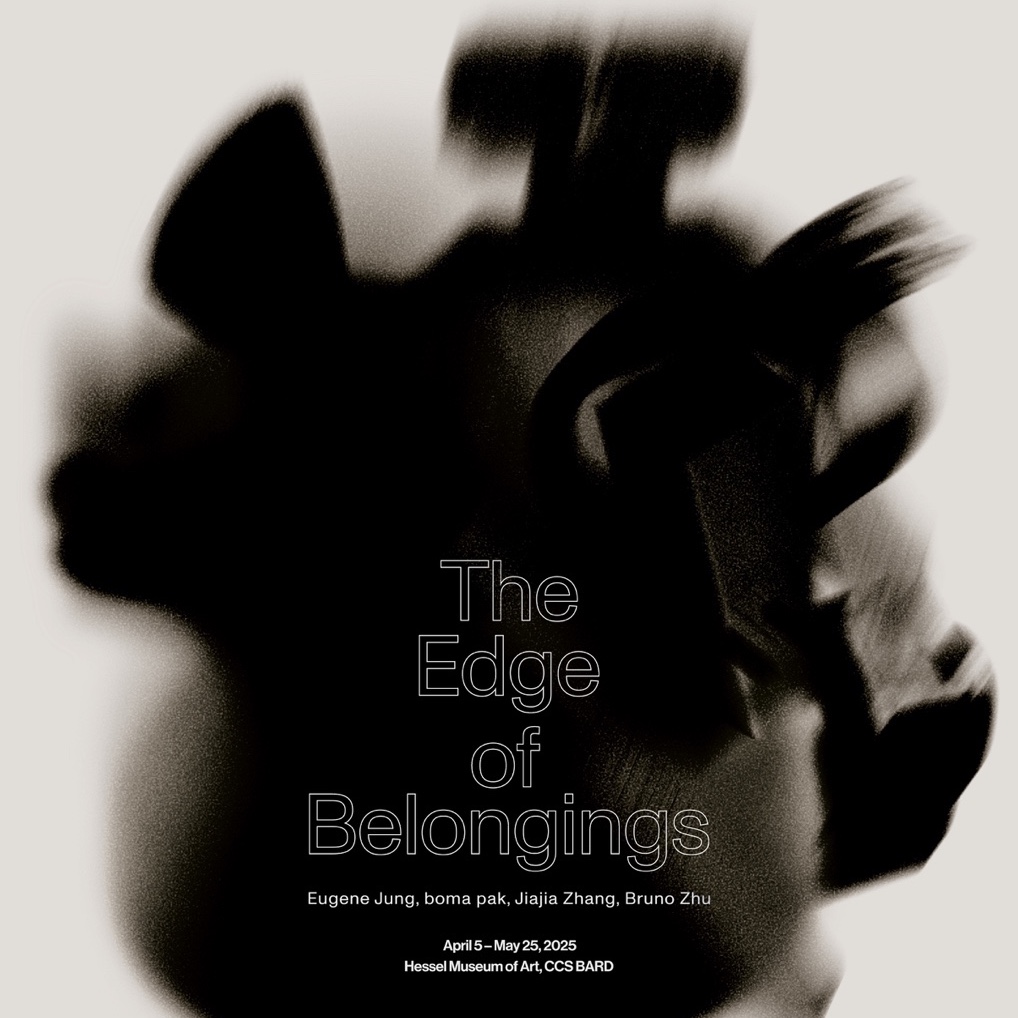Wonhwa Yoon
VOSTOK magazine : Issue 21. May 2020
Earlier this year, as the novel coronavirus spread worldwide, the WHO(World Health Organization) declared a pandemic on March 12, and on March 25, the Japanese government and the International Olympic Committee agreed to postpone the Tokyo Olympics. Around this time, a scene from the 1980s Japanese animation Akira was circulating on the Internet with the saying that it accurately predicted the future. It is a scene with a billboard advertisement saying, “The 30th Tokyo Olympics. 147 days until the event. Let’s make it a success” and graffiti that reads “Smash” and “Stop, stop!” below it. Initially, Akira drew attention in that the setting of preparing for the 2020 Olympics in the future Tokyo became reality, but by February 28, which was 147 days before the actual Olympic event, its meaning was reversed as predicting today’s situation which seemed impossible to hold the event successfully. After the postponement of the Olympics was confirmed, this scene was framed and propagated as not just ominous or disturbing, but as a shockingly accurate prophecy.
Prophecy is different from prediction. For example, when a Japanese artist interviewed by the artist Eugene Jung in her piece Pirated Future says, “The Olympics are actually next year,” it is not strictly a prediction. Because at that time, it was a known fact that the 2020 Tokyo Olympics would be held. It was a decided future and the present was planned and executed accordingly. That is why, at this point when that future is canceled, he does not sound like he is simply saying a wrong prediction, but it sounds like he is speaking from the other side of the time that is already slightly different from now. In a slightly different sense from not being able to go back to the past, it is impossible to go back to the time when the 2020 Tokyo Olympics were supposed to be held. When the future changes, the present and the past also change together. We live in predictions and plans that have not yet been realized but that are regarded as confirmed facts. When scheduled events are canceled and plans are repeatedly delayed, but even the minimal forecast required to plan again becomes difficult, the present becomes as fragile as a sandcastle on the beach when the future is unilaterally pushed in and out.
When the uncertainty of the future engulfs the present, prophecy gains strength. Prophecy is more in line with planned predestination than probabilistic prediction in that it clearly depicts the future. But a prophet is not a planner, but merely a person strongly obsessed with a story or scene. Such fiction can be seen as a ‘revelation’ of some almighty one who can determine and realize the future, or it can be the ‘prayer’ of curses or blessings as the intense and infectious aspiration of the most helpless without such power. However, the so-called Akira prophecy was neither a revelation nor a prayer. Katsuhiro Otomo’s Akira depicts the near-future Neo Tokyo preparing for the 2020 Olympics after World War III in 1988 which was caused by an unexplained explosion in Tokyo. Neo Tokyo is once again destroyed by a flood of superpowers trained as war weapons. It was a twisted projection of the time from World War II, which ended in Japan’s defeat in 1945, to the 1964 Tokyo Olympics, which was the culmination of post-war chaos and reconstruction plans. There is a memory of an indeterminate future that is made possible by repeated history but not completely the same. It is that dimension of the future that Pirated Future is attempting to trigger and occupy.
Disaster in the form of shadows
Basically, Pirated Future is a documentary film that intersects the Chernobyl nuclear power plant explosion in 1986 and the Fukushima nuclear power plant leak in 2011 from the present point of view. In 2019, Japan was preparing for the 2020 Tokyo Olympics and the 2025 Osaka Expo as if equating the Fukushima accident with the atomic bombing in 1945 or at least trying to repeat the successful reconstruction of the postwar ruins once again in the future. In response, the film proposes to reflect on today’s time in Chernobyl rather than Japan in the 1960s or the catastrophic sci-fi image of the 1980s. What does Chernobyl, the site of the most representative and deadly nuclear accident, look like now more than 30 years later?
Regardless of the cause of a disaster, the aesthetics of reconstruction emphasizing its heroic overcoming, or the aesthetics of catastrophe enjoying the possibility of extermination by it, both fetishize power and mobilize images as monuments of such power. However, Chernobyl and Fukushima, visited by the artist, remain in a slow and wide time that does not revert to the spectacle of disaster. Remaining in those times does not mean it is completely stalled. Everything on-camera moves and changes at its own pace. Invisible radioactive substances, soil and building debris covering fields, thickly overgrown grass and trees on top of them, and people living amidst these and those who left them all meet face-to-face or connect from afar with their own clocks moving at different speeds. The complex time formed by such networks is not given in advance as a single total era but slowly emerges through a mediating process, connecting the lines of different times as if knitting. The film witnesses the pervasive shadow of the disaster, traversing Chernobyl and Fukushima, but carefully examines the mottled traces of the shadow before rushing to generalize it as a symptom of the era.
Risks are unevenly distributed. For example, even within Chernobyl, the degree and color of danger felt differ amongst different groups: residents who farm and live, refusing to move outside the restricted area; local residents who develop relatively low radiation level area in the restricted area as tourist destinations; tourists who visit to experience the abnormal risk which they have only seen through the media; and experts who demand countermeasures while informing people of the dangers of nuclear power and the long-term effects of nuclear accidents. One could say that another nuclear accident occurred in Fukushima because the Chernobyl accident has not been properly explained, socially convincing, and thoroughly dealt with for such a long time. (In this case, Chernobyl is the past of Fukushima.) However, in the context of Japan, where the accident site of Fukushima is tied into a no-entry zone to exclude it from society and seek a seamless reconstruction, Chernobyl’s lively appearance can be read as a positive process in which the accident area slowly recovers after a long period of isolation and reintegrates as a part of society. (In this case, Chernobyl is the future of Fukushima.)
On the other hand, from the point of view of Seoul, where there is no exposure to radiation, accepting the chain of disasters from Chernobyl to Fukushima as images of reality that can be grasped, not as a one-time news image or a disaster movie or game contents resembling it, in short, assuming Chernobyl and Fukushima can be the future of Seoul becomes another issue. Between disasters that have already arrived and the disasters that have not yet arrived, explosive events that destroy a place, and the probabilistic death that shortens people’s life expectancy, the dangers of the future stir the present as undeterminable but impossible to overlook. Eugene Jung accepts the air of today as a state in which shadow-formed disasters ominously blur the vision, and the past and the future reflect each other indeterminately and appear in the present like a mirage. In that air that cannot be easily shaken off by hand, disasters sometimes seem to be very close and sometimes very far away. The artist wants to point out that it exists there anyway and ask what it looks like.
Living in Uncertainty
Pirated Future consists mainly of videos and visual materials taken in Ukraine and Japan, and interviews with locals involved in or embroiled in disasters in various forms. The film tries to delicately show things that are not covered well or that are confined in a certain frame with a specific meaning in the media dealing with Fukushima or Chernobyl. However, rather than presenting it as real reality, it keeps reminding itself that it is also in the chain of media images.
Films typically try to subtly show things that are not covered well in the media dealing with Fukushima or Chernobyl or that are locked in a frame of a particular meaning, but rather than presenting it as real reality, they keep reminding themselves that they are in a chain of media images. The meaning of the media image is not fixed in itself but flows with other images surrounding it. For example, the scenery seen by tourists visiting Chernobyl after encountering the game series Stalker, a game set in Chernobyl developed by a Ukrainian company, is not natural in many ways. On the one hand, the image and the actual scenery are imitating each other, and on the other hand, the tourists themselves are looking at the actual scenery while reflecting on the scenery on the screen. To accept the place as a reality, not consuming the image of the reality as just a bizarre spectacle, but to recognize it as a problem in the world to which one belongs, goes beyond simply making an image well.
Rather than solving this problem, the artist left room for the audience to realize it on their own and to some extent to make their own choices. Pirated Future was first screened inside the installation work Doomsday Garden, which was created like a movie theater after the extinction of mankind, covered with lush artificial plants all over the stage and the seats. Who we are, when and where we remain undecided as we watched the film together in a futuristic space where if we say it’s fake, it seemed fake and if we say it’s real it seemed real. This blank could lead the audience to a world of the post-apocalyptic genre but could have also slipped into a space-time that would not be trapped in any official narrative of Seoul in 2019. The shadow of disaster has sparked a new terrain of time in which things contend: a series of timelines that consider what has already happened to what has not yet happened as objective reality; fragments of foreboding and memories that have not attained that degree of certainty; and unexpected expression of non-visible things that have not even been given such a hazy image. Pirated Future in Doomsday Garden tried to amplify the sense of swimming through the opaque and multifaceted flow.
At a time when film festivals and various festivals around the world have been canceled and all screenings and conversations with artists have been replaced by video streaming and remote conferences, the exhibition landscape of Pirated Future + Doomsday Garden is again dispersed into multiple layers of images that were unexpected at the time. On the one hand, things that were difficult to get into the screen, above all, the future of people’s bodies and spaces where they can gather together became rapidly unclear. On the other hand, fighting the opaque and uncertain has become an even more pressing and realistic issue. One might say that maintaining an ambiguous attitude in art in such a situation where uncertainty is already overflowing is either a tautology or an unnecessary surplus. But when our own bodies were isolated individually as a place of danger and a place of increased danger, all they could do was struggle with tentative words and images that claimed their certainty more violently than ever before. In a world where disasters in the form of shadows, which cannot simply be put as an end or victory, unexpectedly come to the fore, Pirated Future exerts a bizarre realism effect. It is not a “shocking prophecy of the future” and the scenes in the film where people are gathered without masks already feel like a bit of an unfamiliar past, but we are staying in a time that cannot be confirmed.



